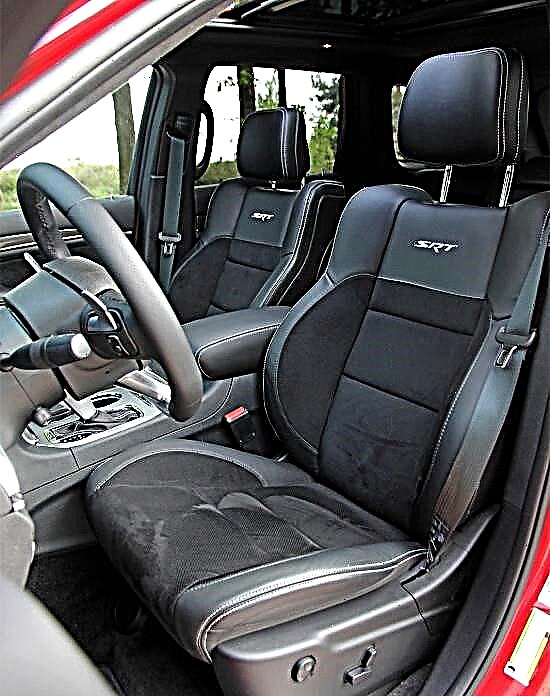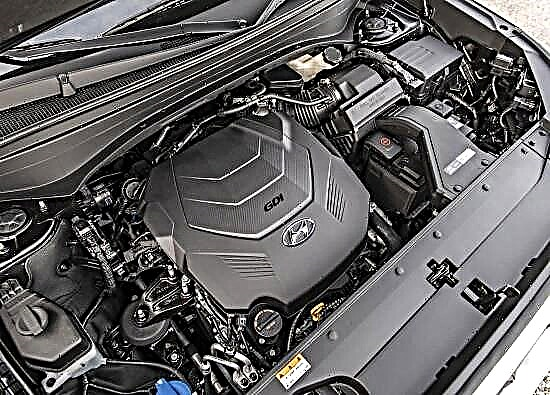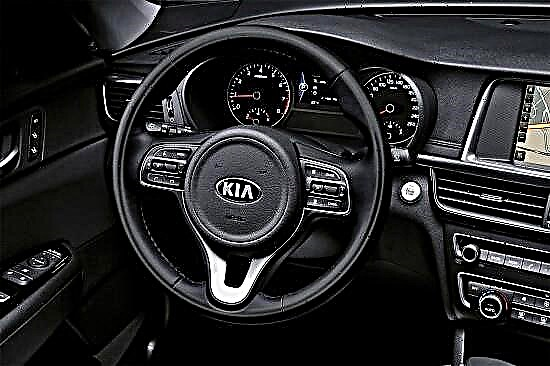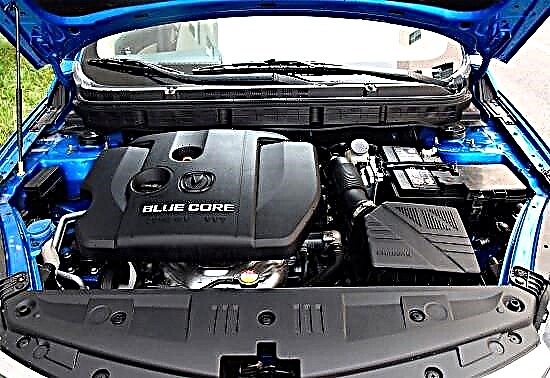Porsche Cayenne S, although it looks like a “twin brother” to a “regular” Porsche Cayenne, but due to a more powerful engine, it is positioned as a full-fledged sports utility vehicle (with impressive dynamics and character of a sports car).

The second generation of "eSki" came out simultaneously with "regular cayenne" and, of course, if by 2015 the "regular" was updated, then at the same time its S-version was also modernized.

Externally, the Porsche Cayenne S, as already noted, is completely identical to the base SUV - only differing in: the lettering on the boot lid, the chrome strip on the rear bumper, the design of the rims, and double round exhaust pipes (instead of single trapezoidal ones).
Like the "base brother", the updated for 2015 "Cayenne S" received: a hood with a "new stamping", more voluminous front fenders, modernized optics, a redrawn front bumper, a large radiator grille and so on (which is described in detail in the main review " base 958th Cayenne ").

The length of the Porsche Cayenne S is 4,855 mm, the wheelbase is 2,895 mm, the width is limited to 1,939 mm, and the height does not go beyond 1,705 mm. The ground clearance (clearance) of the crossover (during restyling has not changed) is 210 mm, but it can increase to 268 mm (due to the clearance adjustment system).
The curb weight of the petrol "Cayenne S" is 2,085 kg, the diesel version of the "S Diesel" is noticeably heavier - 2,215 kg.
We will not talk a lot about the interior of the Porsche Cayenne S SUV, because it is almost completely identical to the interior of the "base Cayenne" and received the same innovations during the restyling by 2015.

The only differences worth mentioning are the use of polished plastic in the interior trim and the availability of more optional color options for the leather upholstery.
Specifications. The most "valuable" thing in the Porsche Cayenne S is hidden under its hood, but first, let's take a short trip back in time and remember with which engines the second generation Porsche Cayenne S began its journey:
- The petrol version of the ESK was equipped with an atmospheric 8-cylinder unit with a V-shaped layout, direct fuel injection, a variable valve timing system and a working volume of 4.8 liters (4806 cm³). The power of the gasoline engine was 400 hp, available at 6500 rpm, and the maximum torque reached 500 N • m in the range from 3500 to 5300 rpm. The engine was aggregated with an 8-speed automatic transmission, but at the request of the customer, dealers also installed a 6-speed manual transmission.
- In turn, the diesel version of the "Cayenne S Diesel" 2010-2014 had an 8-cylinder V-engine with a displacement of 4.2 liters (4134 cm³), turbocharging, direct injection and variable valve timing. The output of this "diesel" is 383 hp. at 3750 rpm, and the peak of its torque falls at around 850 N • m, available at 2000 - 2750 rpm. Like the gasoline unit, the diesel was paired with an 8-speed automatic transmission, but the "mechanics" were not available for it even as an option.
As part of the 2015 update, Porsche Cayenne S cars received slightly different engines:
- The petrol modification got a 6-cylinder V-shaped unit with a working volume of 3.6 liters and a double turbocharging, which allows you to "remove" 420 hp from the engine. power at 6000 rpm and about 550 N • m of torque at 1350 - 4000 rpm. The new engine has noticeably improved the dynamic characteristics of the Porsche Cayenne S - it takes 5.5 seconds to accelerate from 0 to 100 km / h (instead of the previous 5.9 seconds), and the maximum travel speed at the same time added a little bit (having risen from the limit 258 to 259 km / h). At the same time, fuel consumption has significantly decreased, making the 2015 Porsche Cayenne S much more economical than its pre-styling version - 9.8 liters (versus 10.5 liters) in the combined cycle.
- The diesel modification of the Porsche Cayenne S by 2015 also received a different engine, but not a new one, but a modernized old one. Thanks to the changes made by German engineers, the diesel engine became slightly more powerful (285 hp at 3750 rpm), but retained the same level of torque. However, this did not stop to reduce the fuel consumption of the engine and improve the dynamic characteristics of the SUV. Since 2015, the Porsche Cayenne S Diesel has accelerated from 0 to 100 km / h in 5.4 seconds (instead of the previous 5.7 seconds) and consumes 8.0 liters of fuel per 100 kilometers (instead of the previous 8.3 liters) in the combined cycle ... The maximum travel speed remained unchanged - 252 km / h.
We add that after modernization, all versions of the Porsche Cayenne S (958) are equipped with only an 8-speed "automatic" (no options).
The "second Cayenne S" is based on a monocoque body from the "standard" Porsche Cayenne (from which the sportier version also inherited an independent suspension). The only noticeable difference is the presence of PASM air shock absorbers in the basic equipment (which provides the SUV with a smoother ride and the ability to adjust the ride height). The rest of the chassis of the Cayenne S is identical to the "regular" one.
Options and prices. SUVs Porsche Cayenne S and "S Diesel" are already in the base: 18-inch alloy wheels, bi-xenon optics, full power accessories, 6 airbags, cruise control, 2-zone climate control and other equipment (already described in the main review of the second generation Porsche Cayenne).
As for the cost, in the Russian market for the second-generation gasoline version of the Porsche Cayenne S, dealers in 2017 ask from 6,203,000 rubles, and the diesel modification is estimated at a minimum of 6,435,000 rubles.











